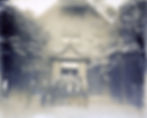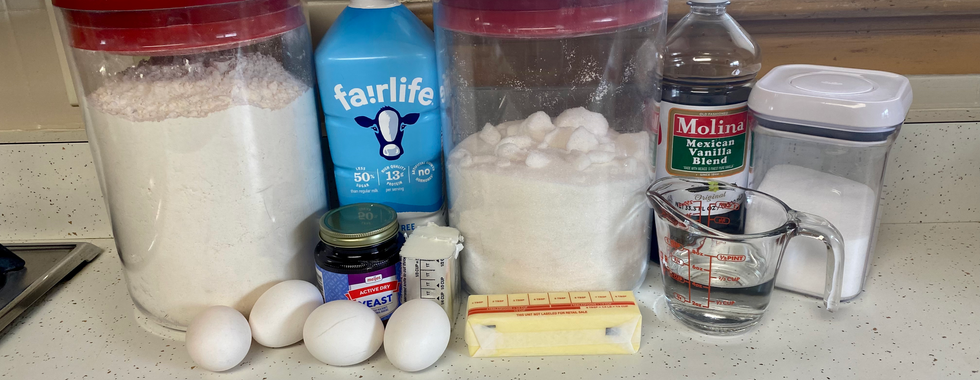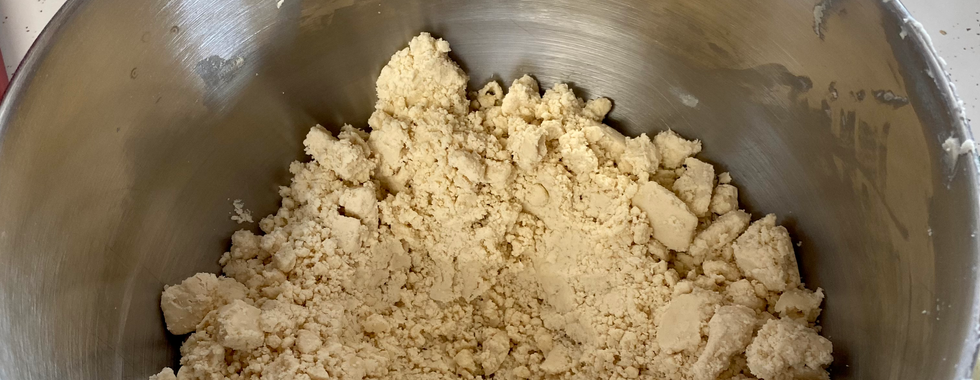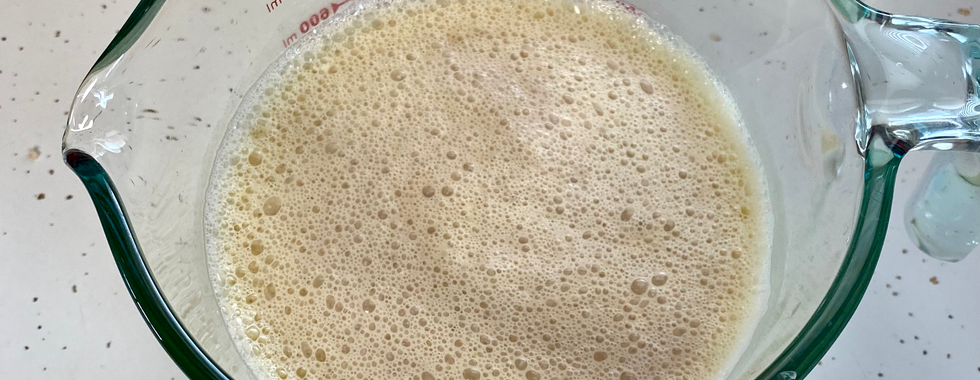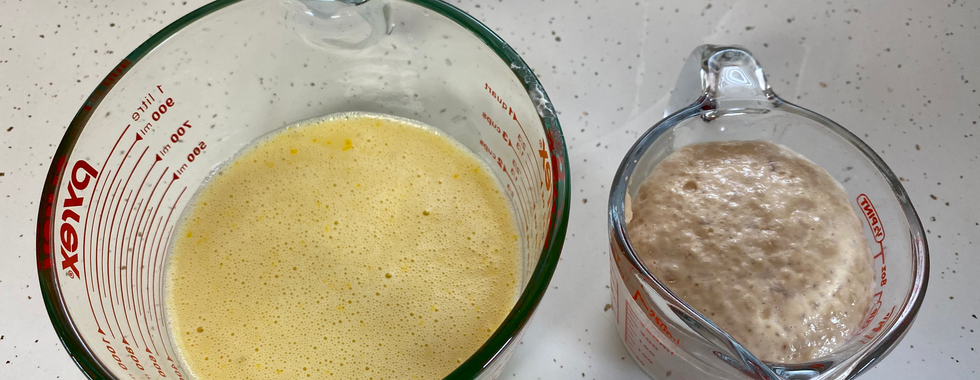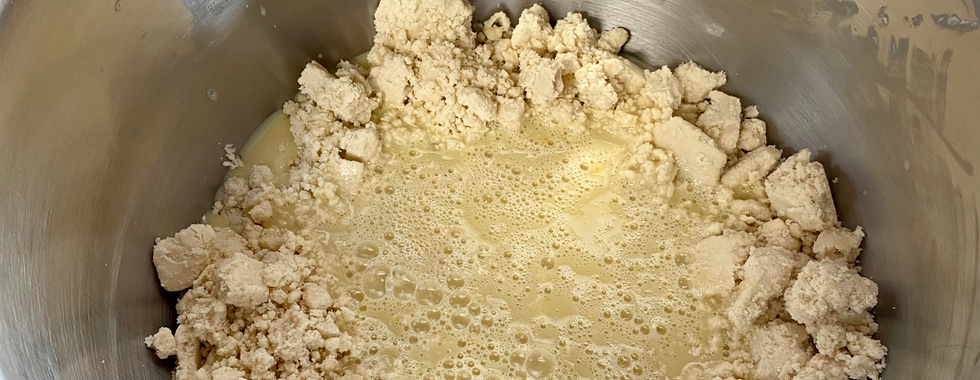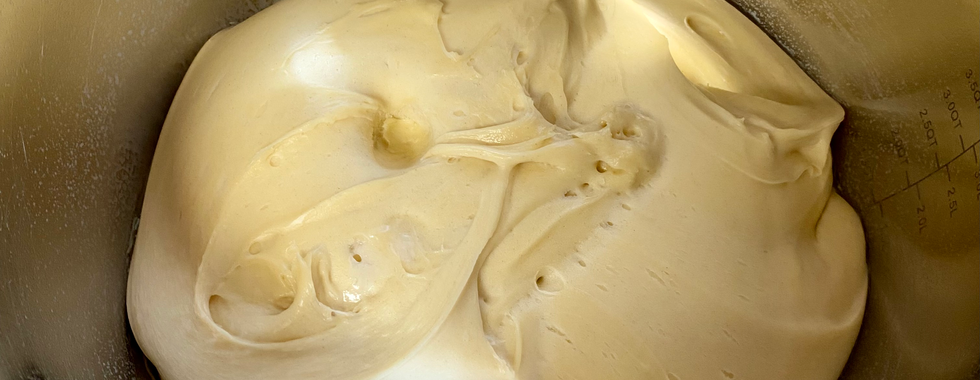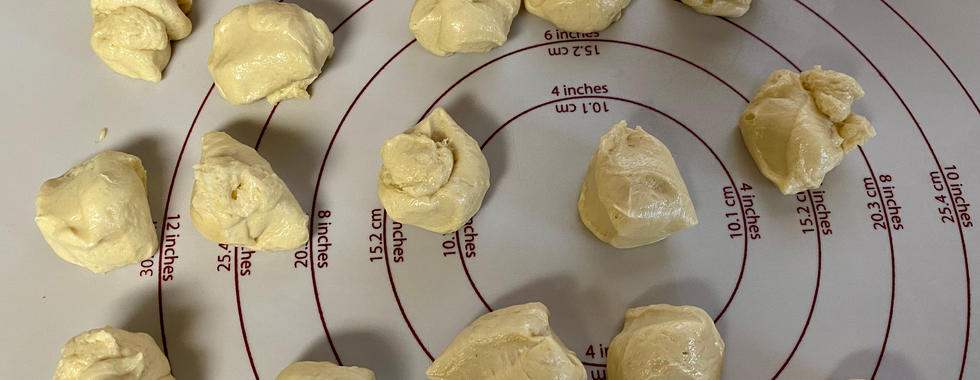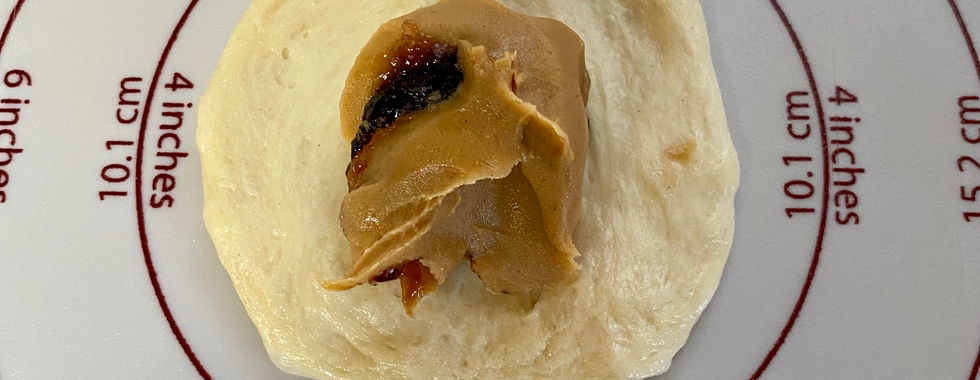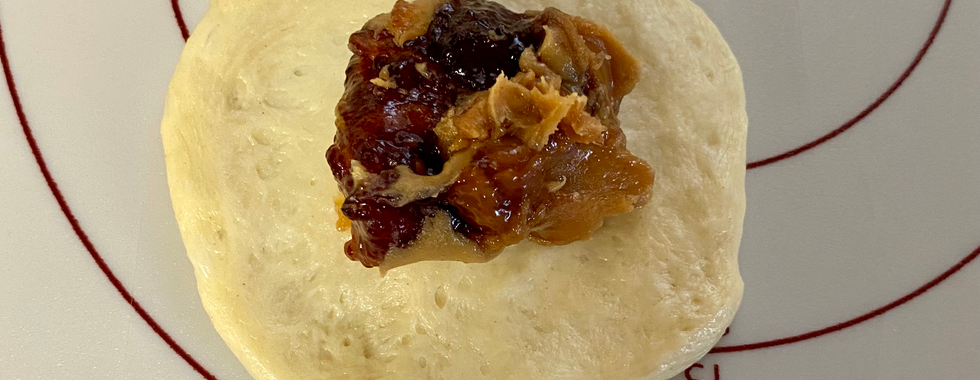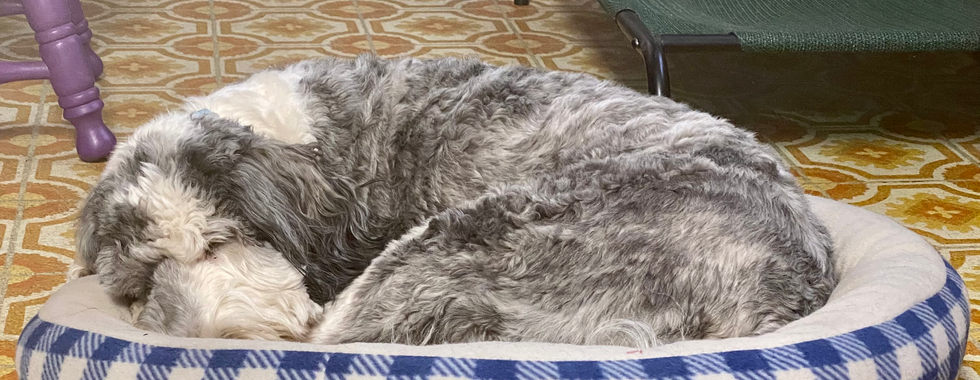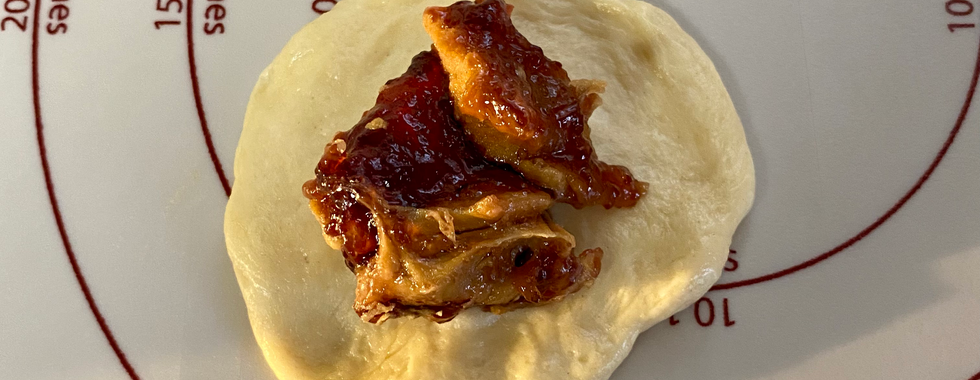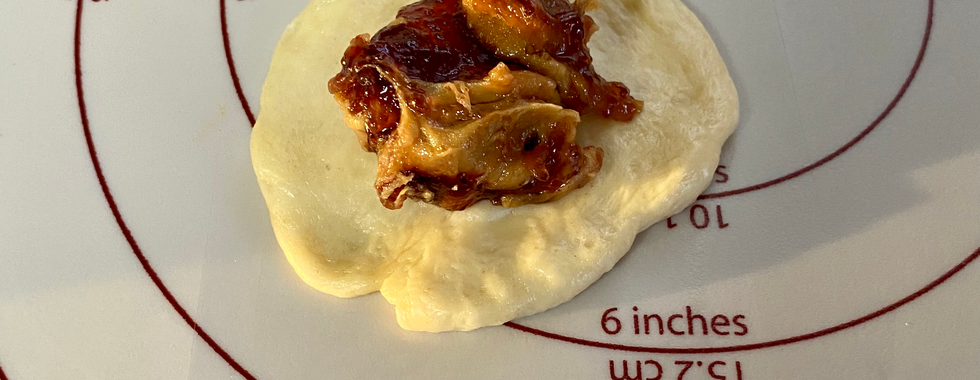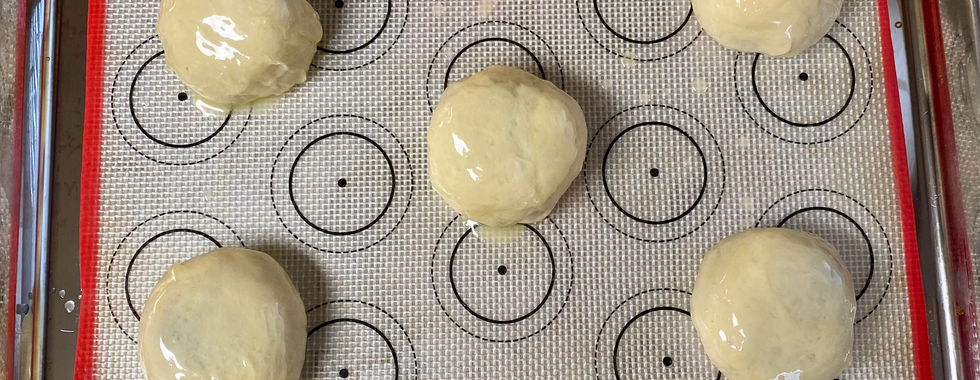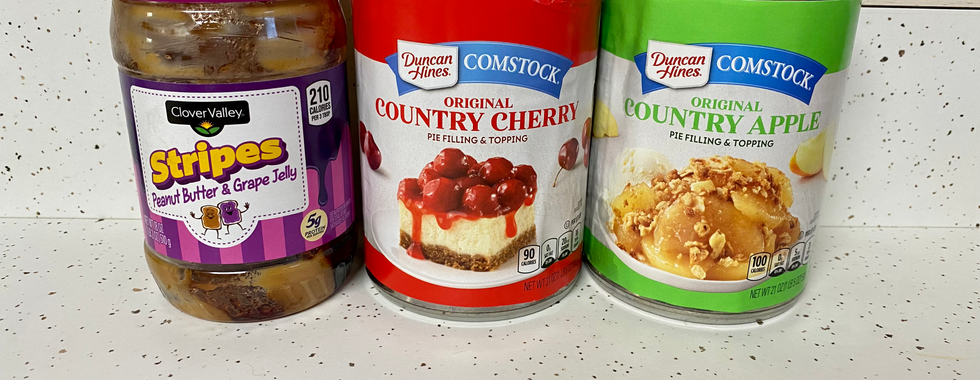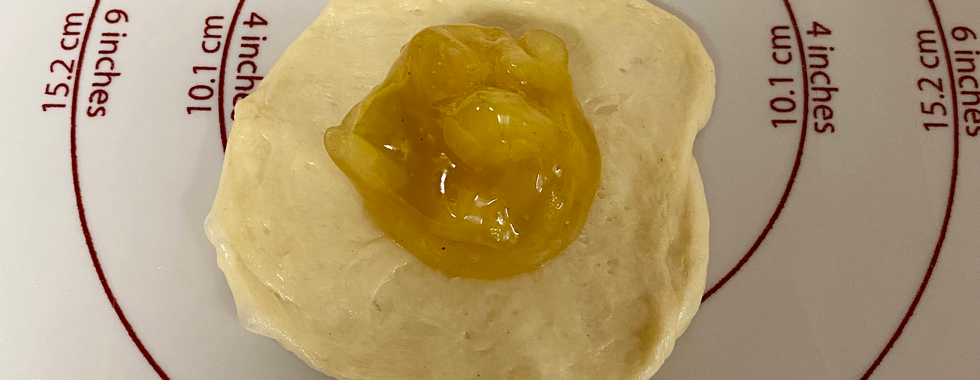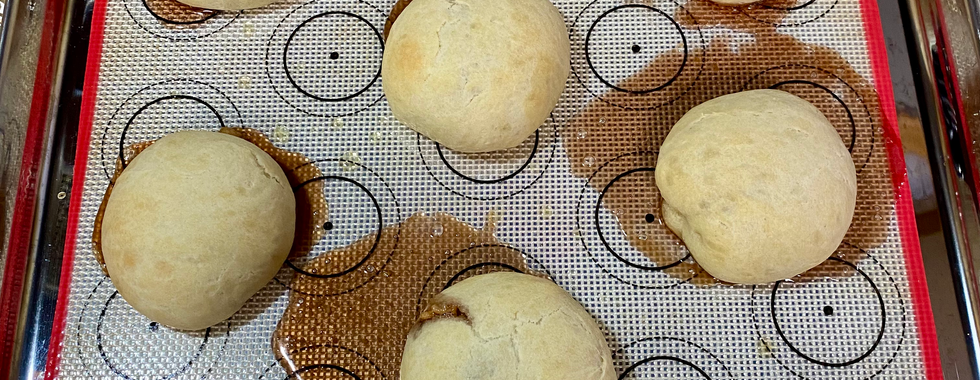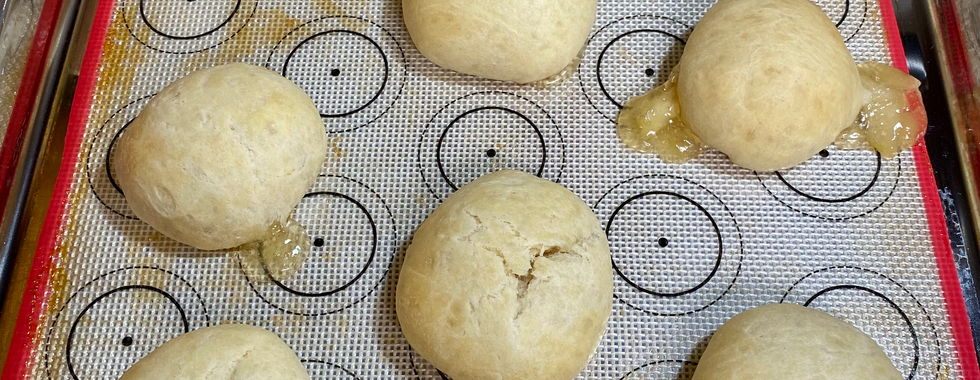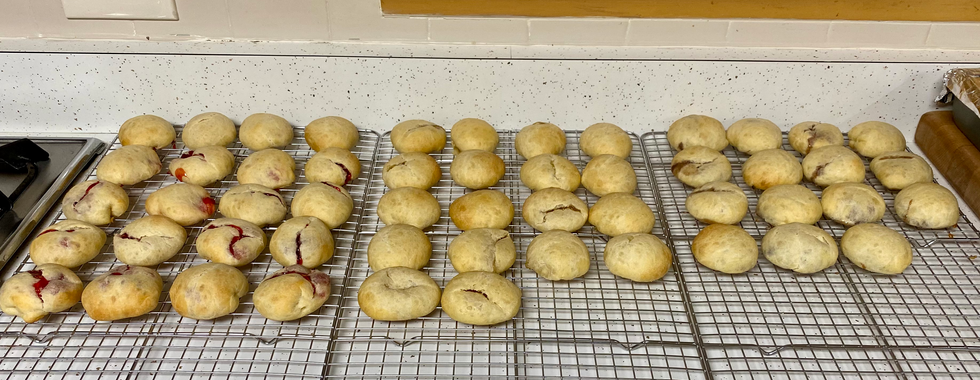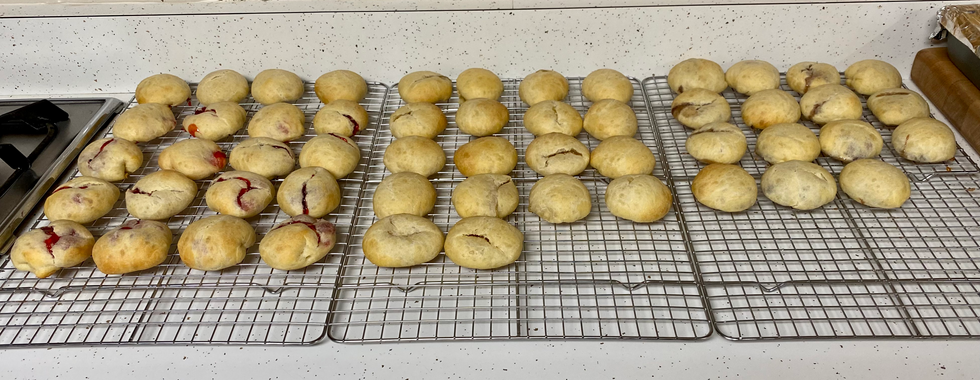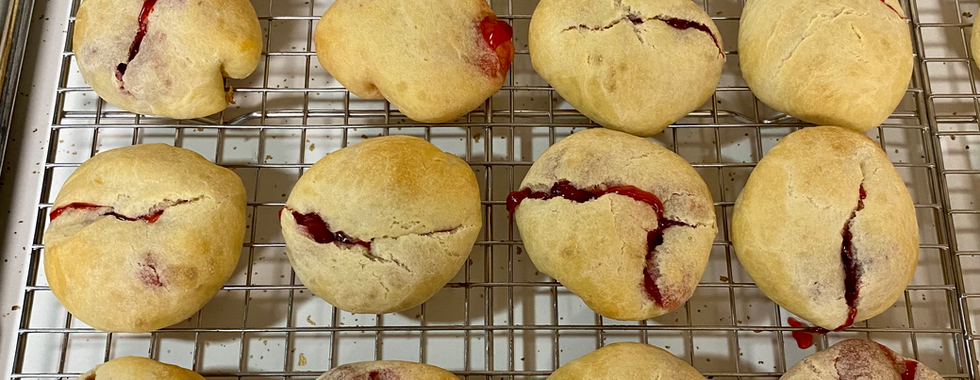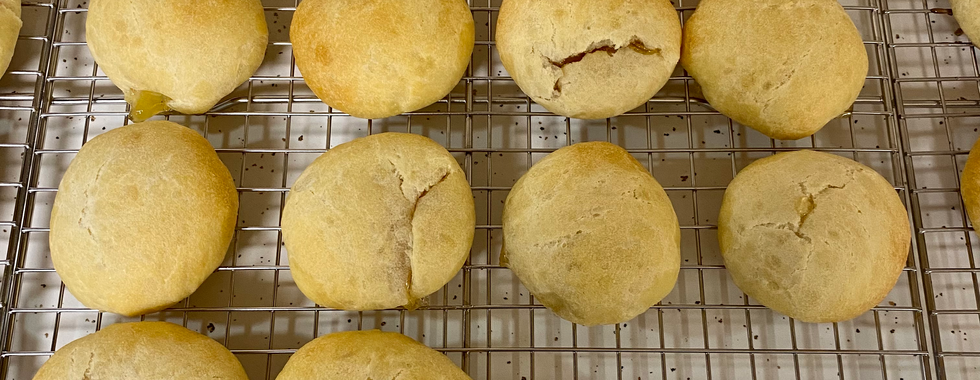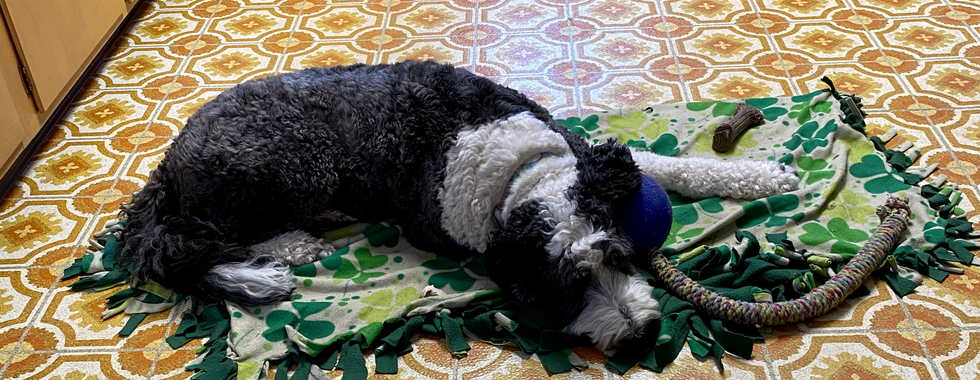A kolach is a type of sweet pastry that holds a portion of fruit surrounded by puffy dough.

Recipe
Dough:
½ cup softened butter
½ cup softened shortening
1 tsp salt
4 cups flour
1 cup cold milk
4 egg yolks
1 tsp vanilla
¼ cup sugar
½ cup warm water
1 tsp sugar
1 pkg dry yeast
Yields: 60 kolache
Combine butter and shortening in a mixing bowl thoroughly (using paddle attachment if stand mixer). Blend in salt. Add half of flour until it makes pea-sized balls. Scrape down bowl and paddle really well. Add second half of flour.
Beat milk, egg yolks, and vanilla together. Add ¼ cup of sugar to the milk and egg mixture and set off to the side.
In a separate bowl, mix the warm water, teaspoon of sugar, and yeast. Mix until yeast is dissolved. Put off to the side until it doubles itself. After yeast has doubled, lightly mix in milk mixture until combined.
Change mixer paddle to bread hook. Make a well in the flour in the mixer bowl. Pour all of the liquid mixture into the flour well. Mix with bread hook until a smooth, well combined dough forms. Let mixer knead dough for about 5 minutes. Put dough in greased bowl, cover, and place dough in refrigerator for at least 4 hours.
Divide dough into 60 equal balls (mine were about 21 grams each). Flatten dough ball, then put teaspoon of desired filling into the center of the flattened ball. Bring up the edges of the dough and pinch together to seal. Put sealed balls seam side down on baking pan. Brush with melted butter. Let rise until doubles in size. Bake at 350° for about 13-18 minutes or until golden brown.
Cook’s Notes: Have fun with the fillings, both sweet and savory. I did not stick to traditional fillings. This time I did apple, cherry, and peanut butter & jelly. However, I have future plans to make some breakfast versions with sausage gravy and eggs/bacon as well as other sweet fillings such as mango, lemon, and chocolate/peanut butter.

History
Bohemian Hall of the Cesko Slovanska Podporujici Spolecnost, Lodge No. 71
Many immigrants came and continue to come to the United States seeking a better life; with their decisions to leave their native homelands often based on the recommendations and encouraging letters of others who had immigrated before them. However, in doing so they left behind not only their homes and way of life, but also the traditional support system provided by their family and friends. In many places throughout the United States, including Saginaw County, immigrants often chose to settle in ethnic neighborhoods, relying on cultural familiarity to aid them in their transition into American society. By the 1850s, some immigrant groups, in particular the Czechs and Slovaks, decided to do more to help their families and friends. “They felt a need for mutual support in times of sickness and a way to provide for widows and children. They also wanted some suitable social activity and a gathering place to discuss their problems.” (CSA Fraternal Life website)
On “March 4th, 1854, 29 Czech immigrant men met in the back room of Jacob Mottl's tavern in St. Louis, Missouri. These men formed a mutual benefit society to gain security and to make sure that if one of them died, the funeral would be paid for by the society, and the wife and children would be helped by the members in their immediate needs. This organization, the Cesko Slovanska Podporujici Spolecnost (Czecho-Slovak Protective Society or CSPS), laid the groundwork for a modern fraternal in this country, which served as a model for many other fraternal benefit societies in America organized in later years.” (CSA Fraternal Life website)
Over the next several decades the society spread throughout the United States and on November 20, 1881, James Rebec formed Lodge No. 71 (later renamed the East Saginaw Lodge No. 214 of the CSA and today called the Saginaw Valley No. 214) in Saginaw. Seven years later they would dedicate their hall:
“The dedication of the new Bohemian Hall, just completed, on the corner of Twelfth and Wadsworth streets, took place last evening, and was an event in the history of the society that will long be pleasantly remembered. There was a large attendance, all seemingly going in for a good time and enjoying themselves. Evergreens artistically arranged saluted the eyes on every side, hanging in festoons, besides flags and mottoes, while on the south wall, worked in evergreens were inscribed the words “Welcome, C.S.P.A.” Prof. Reiss’ orchestra contributed their share to the evening’s pleasure and rendered some fine selections.The speechifying did not commence until quite late, owing to the late arrival of some of the members of the Common Council. Addresses were made by Mayor Baum, Rev. Rowland Connor, George W. Weadock and City Attorney Davitt, all being appropriate, brief and to the point. Dancing followed the speeches, and this was kept up until the grey dawn of daylight nearly appeared. The whole affair was a pleasing success, and the society are to be congratulated upon the handsome hall they have erected, which is a credit to them and the city.”
--Saginaw Evening News, December 11, 1888
To better accommodate the needs of the society, the hall would be remodeled, and a basement added in 1911. Bohemian Hall continued to provide a source of social activities as well as serve as a gathering place for its members for many decades to come. In 1950, however, the dining area was damaged by fire and although it was remodeled, the hall was torn down by 1960. Years later, even though the Lodge owned 10 acres of land on Gratiot near Hemlock, a new hall was never constructed.
Whether it was an event at the Bohemian Hall or a neighborhood picnic, no gathering of Czechs was and still is complete without homemade kolaches. And as many variations there are in the spelling of “kolache” there are just as many regional and family variations to the recipe as well as the choice of fillings.
